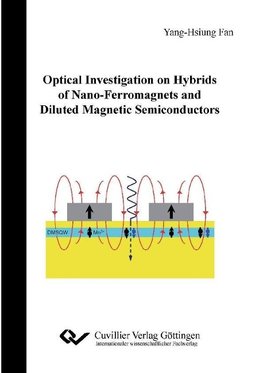
-
 Anglický jazyk
Anglický jazyk
Optical Investigation on Hybrids of Nano-Ferromagnets and Diluted Magnetic Semiconductors
Autor: Xang-Hsiung Fan
The main aspect of this work is to study a hybrid structure made of metallic ferromagnet (FM) on top of a semiconductor to prove possibilities of spin control via the stray field of a FM. To achieve an effective sensitivity, a diluted magnetic II-VI semiconductor... Viac o knihe
Na objednávku, dodanie 2-4 týždne
18.45 €
bežná cena: 20.50 €
O knihe
The main aspect of this work is to study a hybrid structure made of metallic ferromagnet (FM) on top of a semiconductor to prove possibilities of spin control via the stray field of a FM. To achieve an effective sensitivity, a diluted magnetic II-VI semiconductor quantum well (DMSQW) is used, where a film ZnCdMnSe well is used to prove the stray field at a fixed distance from the FM. The s,p-d exchange interaction between magnetic Mn ions and band electrons leads to the giant Zeeman effect with g-factors in the order of 500 at low temperature (T ? 1.5 K). In typical DMSQW with zinc blende symmetry and compressive strain, the exchange interaction of the exciton ground-state is dominated by the p-d coupling of the heavy-hole which has a negligible in-plane magnetic moment and interacts thus mainly with a field component along the quantum well growth direction z. The sample is especially designed with transparent ZnSe substrate to allow photoluminescence (PL) and Faraday rotation (FR) studies. Mn concentration is chosen to obtain an optimal g-factor. The thickness of the cap layer of 25 nm is an empirical value to ensure the stable formation of a type I quantum well structure as well as a strong enough magnetic fringe field in the well layer in the case of hybrid structure. Since the Fe/Tb thin film exhibits perpendicular magnetic anisotropy (PMA), it obeys a remanent outof- plane magnetization which creates the necessary vertical magnetic fringe field component at the position of the DMS well. Patterned FMs (öwireö and öanti-dotö arrays) are fabricated at the Duisburg-Essen University by electron beam lithography of a mask, thermal evaporation of the FM constituents in ultrahigh vacuum and lift-off technique. Wire arrays consist of 1200 nm wide slender bands separated by 800 nm, anti-dot arrays have 1000 nm Î 1000 nm square apertures in the FM. The total height of the FM is smaller than the lateral dimensions. The ratio of FM height to cap layer thickness is designed to optimize the out-of-plane component of magnetic fringe field at the DMS layer. Therefore, this hybrid structure satisfies well the necessary properties for the studies. At the beginning of this work, molecular beam epitaxy (MBE) grown ZnCdMnSe/ZnSe DMSQWs on transparent substrate are characterized and compared with properties of DMSQWs on GaAs substrate. The excitation intensity dependence of the giant Zeeman splitting shows that the Mn spin temperature is equalized with the lattice temperature via spin-lattice relaxation. The FM acts as shadow mask for the optical fields and, apart from a minor diffraction contribution, only uncovered sample regions are optically accessed. For photoluminescence (PL), a laser spot with a diameter below 100 ?m was carefully adjusted to the center of the patterned fields. A photon energy of 2.75 eV and an excitation intensity 1W/cm2 ensure negligible spin heating. The giant Zeeman splitting associated with the FM fringe field is documented by the shift of the PL maximum in different circular polarization detection. An polarization degree of exciton PL | ? |? 30% is found. On the reference DMSQW, an external magnetic field of Bext ? 40 mT is required to achieve the same | ? |. The Faraday rotation (FR) technique is used to verify the fringe field by detecting the splitting of exciton states directly. The resulting difference of phase velocity of right and left circularly polarized light yields the rotation of polarization plane of incident linearly polarized light. A rotation angle ?FR ? 0.3? is found corresponding to Bext ? 40 mT for reference sample. The values for FR are fully in agreement with the data obtained from the PL polarization degree studied. Both for PL and FR, the opposite signal signs prove that the FR in the hybrid structure is indeed caused by the reversed fringe field in the regions between FMs. To perform the spin manipulation of both FM and DMSQW by optical pulse, the Faraday rotation technique is used. A single laser pulse with a photon energy of Eex ? 2.1 eV below the DMS bandgap is chosen to avoid heating of DMSQW as well as substrate and ensures thus dominant interaction with the metallic FMs. FR spectra demonstrate the complete erasing of the average FM magnetization at a pulse energy density at 16mJ/cm2. After application of an external field of again Bext = +5 T, both FM and DMSQW magnetization appear to be fully restored. Physically, the dominant role of heating in the present experiments is related to the pulses with nanosecond duration used. Nonthermal demagnetization of metallic FMs can be achieved only on a much shorter time scale. To reverse the FM magnetisation, a single laser pulse with again 16mJ/cm2 is applied at a reversed field Bext = 0.5 T. The heating pulse enhances the FM temperature reducing coercive field strength Bc below Bext. The momentary narrowing of magnetic hysteresis by laser pulse results in the reversing of FM magnetization under the impact of a laser pulse at a biased field. Finally, Zn1?xMnxO-epilayers with x ? 0.01 are studied to determine the s,p-d exchange integrals No? and No?. The data are extracted from the splitting of A- and B-exciton resonance in reflection spectra. To calculate the exchange interaction constants, the usual Zeeman splitting and the electronhole exchange interaction should be considered. The likely value No? is derived to be approximately 0.50 eV for ?so < 0.
- Vydavateľstvo: Cuvillier
- Rok vydania: 2012
- Formát: Paperback
- Rozmer: 210 x 148 mm
- Jazyk: Anglický jazyk
- ISBN: 9783954040070

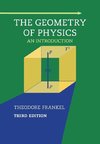
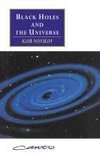
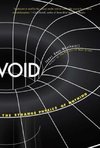
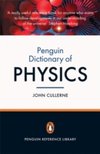


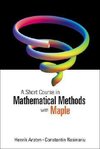


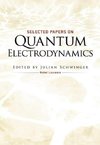

 Nemecký jazyk
Nemecký jazyk 